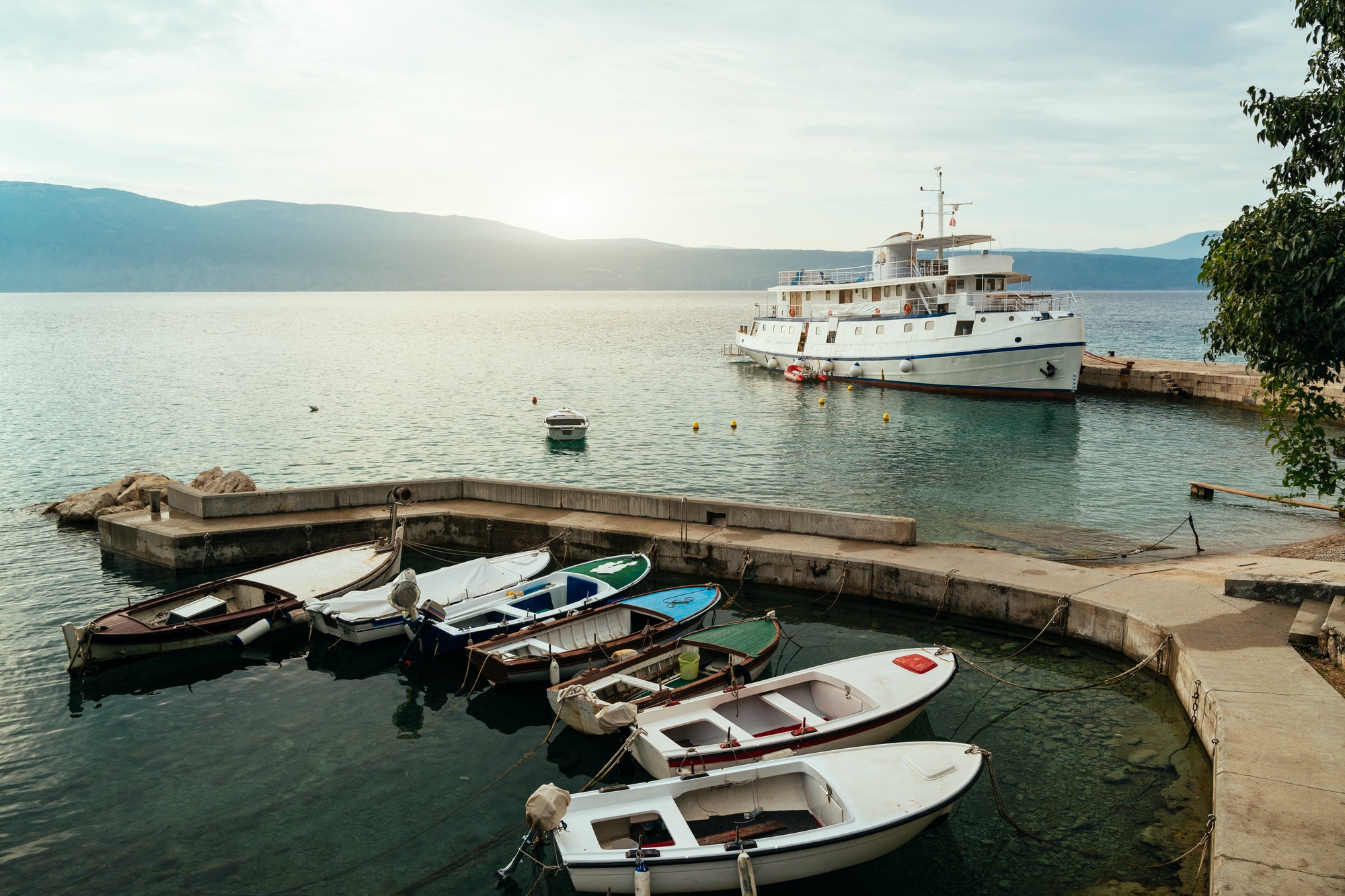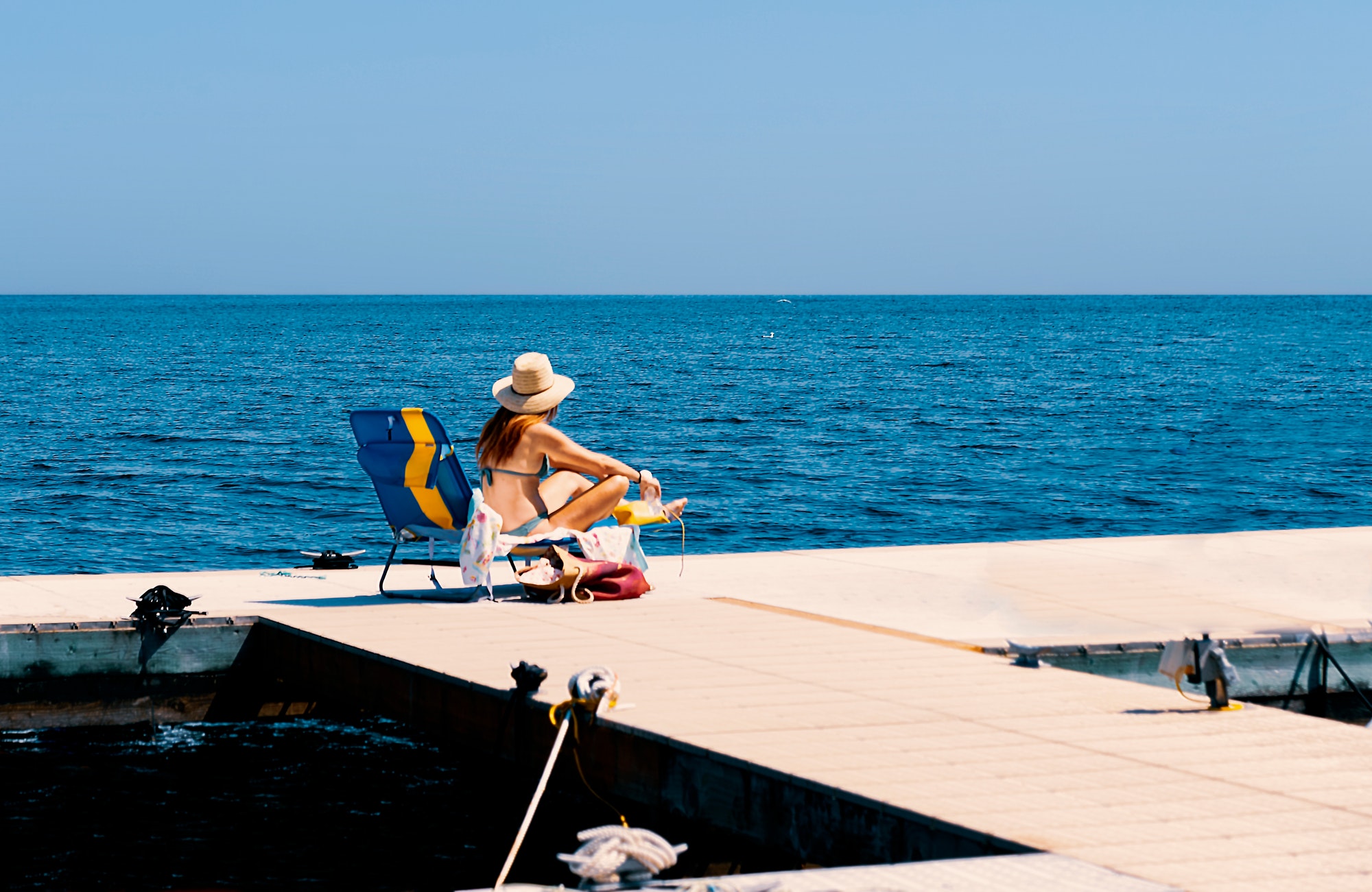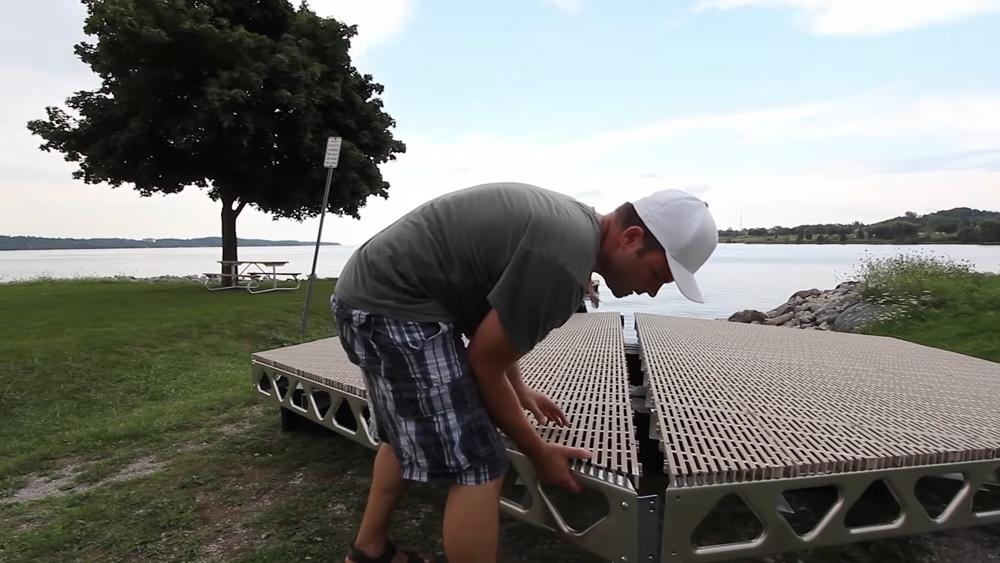What are the different types of docks for lakes?
When it comes to docks for lakes, there are three main types: fixed, floating, and modular. Each class has unique benefits that may make it the best choice for your needs. Here’s a closer look at each one:
Fixed Docks
Fixed docks are attached to the shoreline and cannot move. This makes them a good option for those with a stable water level since the dock will remain in place regardless of fluctuations.
They are also ideal for those with rocky or silty bottoms as they can be anchored into these surfaces easily. However, they’re stationary, so You can’t use them in areas with moving water.

Floating Docks
Floating docks are just that–docks that float on the water’s surface. This makes them incredibly versatile as they can quickly accommodate changes in water levels.
They’re also great for those who want flexibility in their dock configuration, as they can be configured to fit your exact needs and specifications.
Additionally, floating docks are perfect for those with shallow or murky waters as they help keep debris out from under the dock. The only downside is that they can be more susceptible to wind damage than other types of docks.

Modular Docks
Modular docks are made up of individual sections which can be assembled or disassembled depending on your needs. This makes them an excellent option for those who want portability, as You can quickly move them from one location to another.
They’re also perfect for those with changing water levels as you can adjust the number of sections depending on the height of the water. Modular docks are typically more expensive than other types of docks, but they offer the most flexibility and versatility.

What is the best dock design for a lake?
When it comes to docking design, there are many things to consider. The most important factor is the environment in which the dock will be used. For example, if you’re building a dock for a lake, you’ll need to consider water resistance and submersion.
Another important consideration is how the dock will be used. If it’s going to be a swimming pool transition area, you’ll need an easy walkway with no shelter. This design works best in milder climates where natural shade and ground cover are available.
The design which is usually the best for lakes is the floating dock. This dock is designed to float on the water and should be anchored or weighted down somehow.
A floating dock should be made from a sturdy material that will not rot in the water. Usually, treated wood is used for this purpose, but polystyrene and plastic are also good materials to use.
What are the different dock styles?
There are many different dock styles to choose from, and each has its benefits and drawbacks. Some of the most popular dock styles include:
– Floating docks: These docks are made of lightweight materials that You can easily move around. They are good for areas with changing water levels or wind conditions.
– Fixed docks: These docks are permanently installed in a particular location and cannot be moved. They are suitable for areas with stable water levels and winds.
– Modular docks: These docks can be assembled or disassembled quickly, making them a good option for temporary use or when storage space is limited.
– Gangway docks: These elevated walkways allow people to cross between a boat and land without getting wet.
– Boat lifts: These devices raise boats out of the water so they can be secured to the dock while not in use. This protects the hull from damage caused by contact with the water.
Each dock style has its advantages and disadvantages, so it’s essential to consider how you plan to use your dock before making a decision. For example, if you plan to use your dock for swimming, you will need one sufficiently deep enough to accommodate you. If you have a large boat, you will need a dock with a large footprint that can accommodate it.
How do you build a floating dock on a lake?
Building a floating dock on a lake is a great way to add extra space for your boat. Floating docks are more versatile than stationary ones, and You can use them in various settings.
Floating docks are considered permanent structures, while Stationary Docks are built on piles that can move into the lake bed. However, because floating docks rise with the water level, they can also be considered semi-permanent. This means they can be taken out of the water for storage during the dry season.
One important thing to note about floating docks is that they must be permanently attached to the land. This could mean using concrete blocks or building a wooden pier, which will run you around $100 per linear foot. If you’re looking for something more permanent, you might consider opting for a full steel version instead–these can cost up to $500 per linear foot!
Just like anything else, it’s important to do your research before building a floating dock on a lake. Make sure you find an experienced contractor who knows how to construct these types of structures properly and who will work with you to ensure your dock meets all safety requirements.
What type of material should be used for building a dock on a lake?
There are many factors to consider when building a dock on a lake. One of the most important decisions you’ll have to make is what material to use for the dock’s surface. Here are some pros and cons of the three most popular options:
Wooden Decks:
Wood is the most natural-looking option, but it also requires the most maintenance. You’ll need to stain or seal the wood every year or two, and even then, it might not be very durable in wet environments.
Composite Decks:
Composite decks are made from a mix of materials, including plastics and wood fibers. They might not look as authentic as a wooden deck, but they can last longer with less upkeep. They’re more resistant to weathering than wood, but they still require some regular care (cleaning and sealing).
Aluminum Decking:
Aluminum is a unique decking option with some side effects in the summertime that make it less attractive than other options (higher cost, higher risk of heat damage). However, aluminum framing is solid and won’t rot as wood does. It’s also easier to care for than composite decks.
How much does it cost to build a dock on a lake?
The price of a dock depends on the size, materials, and options included in the purchase package. For example, if you want a dock with electrical wiring and lighting, that will add to the cost. Generally, expect to pay anywhere from $5,000 to $25,000 for a quality dock.
Building a dock on a lake can be a fun and rewarding project, but it’s important to factor in all the costs before getting started. The price of materials, the size of the dock, and the amount of labor required all play a role in determining the total cost.
Custom dock costs vary greatly depending on the type and size of the boat or dock you want to build. Location, depth, access points, materials used, and labor can significantly affect a dock’s cost.
DIY means “do it yourself.” If you’re handy with tools and have some construction experience, you may be able to save some money by building your own dock. The FAQs section covers various topics related to building docks on lakes, such as what materials are used and calculating the cost.
How big should my Lake Boat Dock be?
A platform deck is placed on or just above the ground, while a multilevel design combines aspects from both. When it comes to the size of your dock, bigger is not always better. It would be best if you considered how much space you have available and what you will be using the dock for.
If you’re unsure how big your dock should be, start by measuring the length and width of your boat. This will give you a good idea of how much space you need. Don’t forget to leave room for walking around the boat and docking it!
Another thing to remember is whether you want the space covered or uncovered. Cover may be a good option for you if you plan on spending a lot of time at the dock. It will provide shade and protection from the elements.
On the other hand, if you prefer an open-air space, go with an uncovered design. This will allow you to enjoy nature’s beauty and a nice breeze.
When designing your Lake Boat Dock, don’t forget about comfort! Decide what type of furniture you want and ensure plenty of seating for everyone. Add accessories like umbrellas and fire pits to make it feel like home.
Do I need approval from my HOA or municipality to build my Lake Boat Dock?
Building a dock is a big investment, and you’ll want to ensure you follow all the necessary rules and regulations. The good news is that most homeowners associations (HOAs) don’t have any specific regulations when it comes to docks. However, if your municipality has rules about building docks, you’ll need to follow those guidelines.
Is a floating dock better than a stationary dock?
There are pros and cons to both floating and stationary docks. Floating docks are more affordable but may not be as sturdy as a stationary dock.
Stationary docks are built on wood or concrete piles, making them more solid than floating docks. However, a floating dock can be more versatile than a stationary dock- it can be moved to different parts of the lake depending on your needs.
Floating docks also have fewer maintenance issues than stationary docks. You don’t have to worry about lifting heavy weights between water and deck during the dry season- the dock will float up! However, a floating dock is more susceptible to wind and weather damage because they’re made of lighter materials.
Consider an appearance, price, and ongoing maintenance when choosing a dock design.
Composite is easy to maintain but won’t provide the same look as wood. Aluminum decks are unique but may be more expensive and can get hot in the summertime. Decide between budget and care for your deck’s materials before looking at pictures of similar decks.
How do you secure a boat dock to land?
Securing a boat dock to land can be done in a few different ways. One way is to use aluminum pipes. These are less permanent and can be adapted to water that is not too deep with an even, stable bed.
Another way to secure a dock is by using wooden beams. Beams offer more stability and permanence but require more time and effort to install correctly.
Finally, some people choose to use metal cables as a means of securing their dock. Cables provide the most security but also the least flexibility–they cannot be moved or adjusted easily if needed.

